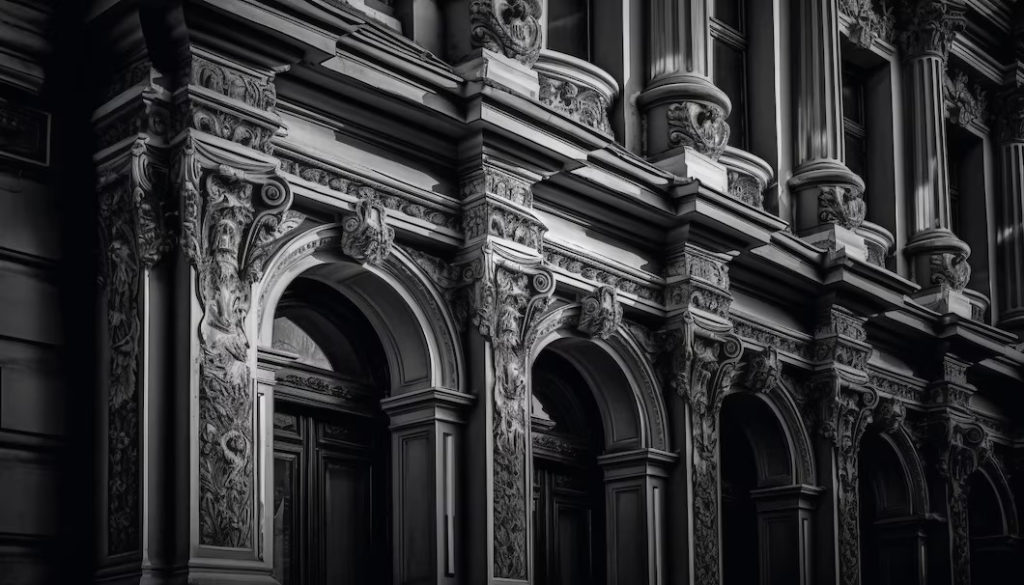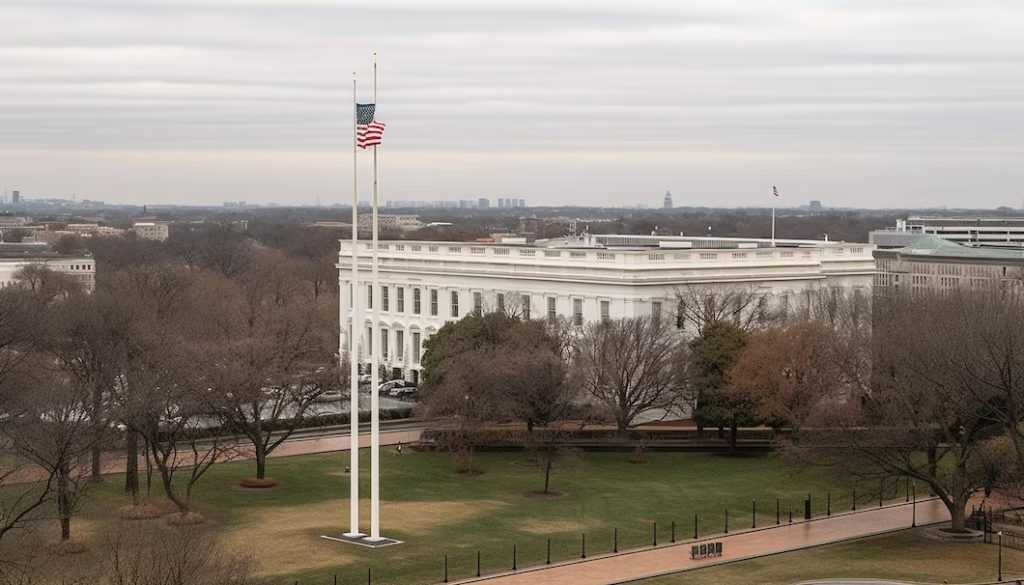Philadelphia is known for its unique architectural heritage, with buildings dating back to the colonial era. Over time, various styles have emerged, each with its own unique characteristics and significance. From Georgian-style houses to Victorian-era buildings, Philadelphia has seen it all. In recent years, modern architecture has taken center stage, with skyscrapers dominating the skyline. But what about the future of architectural design in this historic city? In this blog post, we will explore the evolution of architectural design trends in Philadelphia over the years. We will delve into the historical styles that shaped the city’s architecture and how they have evolved to contemporary designs. We will also discuss current architectural trends such as sustainable and eco-friendly designs and predict what the future holds for Philadelphia’s architecture. Join us on this journey as we explore one of America’s most historic cities through its architecture!

Historical Architectural Styles in Philadelphia
Philadelphia’s architectural history can be traced back to the 17th century, showcasing a vibrant tapestry of styles. From the elegant Georgian architecture to the ornate Victorian buildings, the city is a visual representation of its rich history and cultural heritage. Each architectural style adds to Philadelphia’s unique charm and reflects its evolution as a city. One can witness the influence of the Greek Revival style in the majestic City Hall, or explore the colonial-era structures along Market Street. Notable landmarks like Christ Church and the Pennsylvania Academy of the Fine Arts exhibit the city’s architectural diversity. Architect Frank Furness left his mark on Philadelphia with his striking designs, including the Lower Levels and Chestnut Hill. The entire city is steeped in architectural treasures from the 18th century that tell the story of Philadelphia’s growth and development.
The Influence of Georgian Architecture
Georgian architecture has significantly influenced Philadelphia’s building design, with symmetrical facades and classical elements. Walnut Street is a prime example, featuring stunning Georgian-style homes. The city’s historic landmarks also showcase the enduring appeal of Georgian design. The beauty and charm of Georgian architecture, with its graceful proportions and attention to detail, continue to captivate residents and visitors, contributing to Pennsylvania’s cultural heritage.
Victorian Style Buildings and Their Significance
During the 19th century, Victorian-style buildings thrived in Philadelphia, showcasing ornate details and elaborate designs that have become iconic. Philadelphia’s Society Hill neighborhood is home to many well-preserved Victorian homes, which contribute to the city’s architectural legacy. The rise of Victorian architecture symbolizes an era of prosperity and innovation in Philadelphia’s history. These buildings stand as a testament to the city’s cultural heritage and reflect the period’s architectural trends. The preservation of Victorian-style buildings adds to the city’s charm and showcases the rich history and architectural diversity of Philadelphia.
Emergence of Modern Architecture
In the mid-20th century, Philadelphia adopted modern architectural styles, focusing on functionality and simplicity. The city’s skyline transformed with the construction of skyscrapers, reflecting progress and innovation. Modern architecture in Philadelphia merged traditional Georgian-style structures with advanced materials, creating a unique character. The city’s skyline reflected society’s changing needs and aspirations, with each building contributing to the vibrant tapestry of Philadelphia’s architectural evolution.

Impact of Skyscrapers on the Cityscape
Philadelphia’s skyscrapers have transformed the cityscape, symbolizing urban growth and development. These towering structures represent the city’s economic vitality and technological advancements. The Comcast Centre in Center City exemplifies the city’s ambition and modernity. The vertical expansion of the cityscape not only demonstrates progress but also contributes to its aesthetic appeal. Skyscrapers represent the city’s thriving economy and shape its identity, making them a significant landmark in the city.
Modern Residential Architecture Trends
Philadelphia’s modern residential architecture is embracing sustainable design principles, incorporating green building practices into new developments. These homes prioritize open floor plans and maximize natural light, creating bright, airy living spaces. These designs cater to evolving needs and lifestyles, offering functional and adaptable spaces. As the city continues to grow, modern residential architecture plays a crucial role in shaping the future of Philadelphia’s urban landscape.
Iconic Buildings and Their Architectural Styles
Philadelphia boasts a rich architectural landscape, featuring iconic buildings that showcase different styles and represent the city’s cultural and historical heritage. The Philadelphia Museum of Art blends classical and modern elements, while the Comcast Centre is sleek and contemporary. Independence Hall, a UNESCO World Heritage Site, showcases Greek Revival architecture. Each building represents different eras and influences, showcasing Philadelphia’s commitment to preserving its architectural legacy and showcasing the city’s evolution.
The Artistic Design of Philadelphia Museum of Art
The Philadelphia Museum of Art, a stunning example of Beaux-Arts architecture, features a neoclassical facade reminiscent of ancient Greece and Rome. Its grand staircase and columned entrance evoke a sense of grandeur, attracting visitors to its world-class art collection. The museum’s ornate details and symmetrical design complement its world-class collection, creating an immersive experience for visitors. The museum serves as a testament to the city’s rich artistic heritage.
The Unique Structure of the Comcast Centre
The Comcast Centre in Philadelphia, a tall, contemporary building, is a prominent landmark in the city. Its sleek glass facade and commitment to sustainability make it a symbol of the city’s modernity. The building’s unique structure attracts locals and visitors, showcasing the city’s commitment to environmental responsibility. Its design captures the essence of modern architectural design while contributing to the city’s evolving skyline.

The Historic Importance of Independence Hall
Independence Hall, a UNESCO World Heritage Site, is a significant symbol of American democracy and freedom, showcasing the ideals and designs of the 18th century. Its striking red brick Georgian-style exterior and the Assembly Room, where the Declaration of Independence was formed, make it a must-visit destination for history enthusiasts. The iconic landmark in Philadelphia, a city rich in architectural heritage and cultural significance, is a must-visit for history enthusiasts.
How has Architectural Design Evolved Over the Years in Philadelphia?
Historical buildings in Philadelphia showcase the city’s rich architectural heritage, reflecting changing societal values. From Georgian to modern styles, the architectural diversity of Philadelphia is evident. Influences from different periods can be seen in the city’s buildings, highlighting the importance of architectural preservation and history.
The Shift from Traditional to Contemporary Designs
Philadelphia has transitioned from traditional architectural styles to contemporary designs, showcasing its rich architectural heritage. Contemporary architects are known for their innovative materials and forms, pushing boundaries in design. Despite this, Philadelphia continues to embrace both traditional and contemporary styles, creating a diverse architectural landscape. Iconic buildings like City Hall and Market Street showcase the harmonious coexistence of traditional and modern structures, reflecting changing preferences and showcasing the city’s diverse architectural landscape.
Technological Advancements and Their Role in Architecture
Technological advancements have significantly transformed architectural design, enabling architects to create complex structures with ease using computer-aided design (CAD). This has improved precision and efficiency, while promoting sustainable practices. Innovative materials and construction methods allow for eco-friendly buildings. Building information modeling (BIM) facilitates collaboration among architects, engineers, and contractors, streamlining the construction process. Virtual reality (VR) technology allows clients to experience architectural designs in a realistic and immersive way before physical construction. These technological advancements have opened up endless possibilities for creative and sustainable design solutions.
Current Architectural Trends in Philadelphia
Sustainable and eco-friendly designs are increasingly becoming popular in Philadelphia, reflecting the city’s commitment to environmental consciousness. The incorporation of green technologies and practices allows for energy-efficient buildings that minimize their ecological footprint. Another notable trend is the adaptive reuse of historical buildings, which not only preserves their cultural significance but also contributes to the unique charm of the city. Mixed-use developments have also gained traction, catering to the needs of modern urban living by combining residential, commercial, and recreational spaces within a single location.
Moreover, the integration of green spaces throughout the city promotes a healthier and more livable environment for residents. Lastly, the use of smart technology enhances the functionality and efficiency of buildings, improving overall quality of life in Philadelphia.
Sustainable and Eco-Friendly Designs
Philadelphia actively promotes sustainable practices to combat climate change. Architectural design in the city prioritizes green building certifications like LEED, ensuring that buildings are environmentally friendly. Energy-efficient systems are implemented to reduce the environmental impact of structures, while the use of renewable materials contributes to sustainable construction. These eco-friendly designs not only benefit the environment but also enhance the quality of life for both residents and visitors. Philadelphia’s commitment to sustainability is evident throughout the entire city, from its historic buildings to modern developments. By embracing sustainable and eco-friendly designs, Philadelphia is setting a positive example for other cities, showcasing how architecture can play a vital role in creating a greener and more sustainable future.
Conclusion
Philadelphia’s architectural history has undergone significant changes over the years, reflecting the influence of various styles and societal shifts. From Georgian and Victorian influences to the emergence of modern architecture, iconic buildings such as the Philad-elphia Museum of Art, the Comcast Centre, and Independence Hall showcase the city’s unique architectural styles. However, the future of Philadelphia’s architectural landscape is expected to focus on sustainable and eco-friendly designs, reflecting a growing awareness of environmental concerns. Whether you appreciate historical significance or modern trends, the city offers a diverse range of architectural experiences for you to witness firsthand. For more information on Philadelphia’s architectural history or to plan a tour, please contact us.







